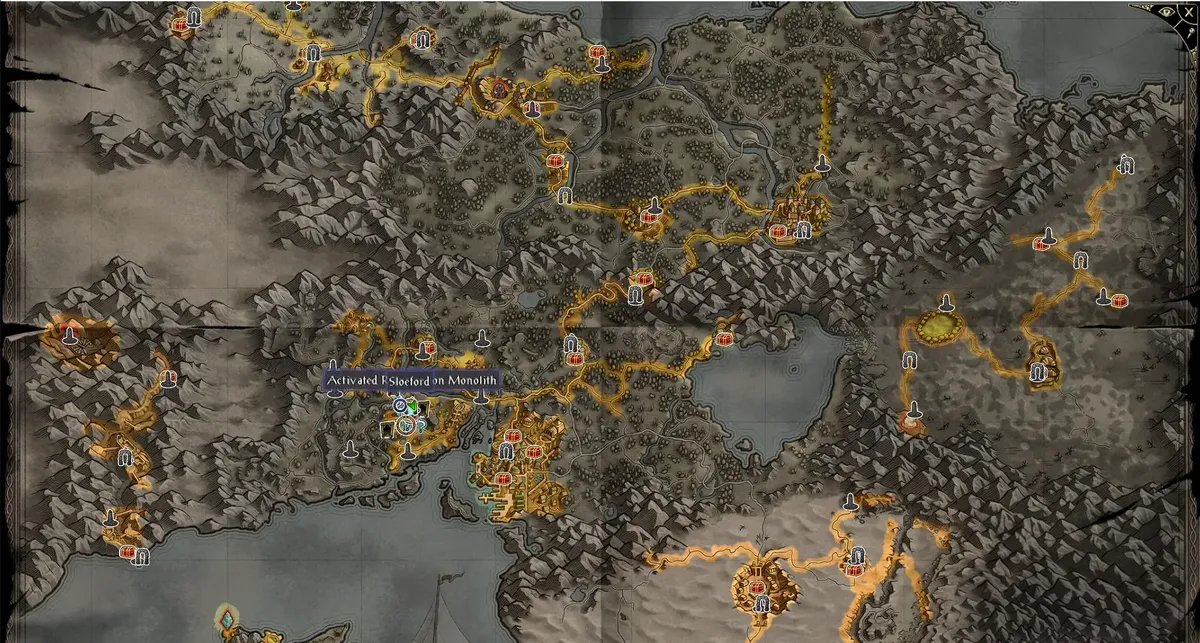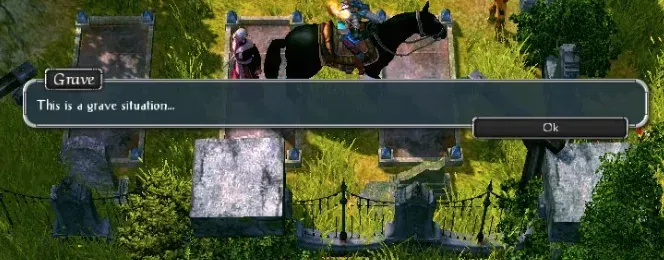Sacred 2 was a diamond in the rough
Sacred 2 is a not-so-hidden gem that showed what ARPGs could be, given the chance, time, and money
 Source (the Internet Archive saves the day)
Source (the Internet Archive saves the day)
Note: this was originally published on Medium. It was edited to be published here.
Revisiting this old gem is like meeting an old friend: weird at first, but surprisingly nice. There are some games you just can’t play enough, they always make you want to come back, no matter how good or bad they are. For me, Sacred 2 is one of them.
Don’t get me wrong: Sacred 2 is a deeply flawed game, but a charming one at the same time. And it doesn’t seem I’m the only one who thinks so, as the game still has a die-hard community, even though it’s 16 years old, having a Community Patch being (sparsely) updated and posted on the Dark Matters Forum, a place where sometimes nostalgic people, such as myself — a lurker there — go to look for answers, builds and tips, or just to see if there’s any new game that mimics what we love about Sacred.
One of the best things about the game is the soundtrack, which even has a piece of music specially composed by the band Blind Guardian (and the musicians themselves are in the game, have their own quest, and if you finish it, you can watch a concert and get some instruments that double as weapons as a reward). It’s very nostalgic to start a game, see the bright colors, hear the music, and if you have PhysX installed, see some very cool effects when using magic and walking around.
The game has a high fantasy setting and is unapologetic about it, even making fun of itself and other things — a stark contrast with Sacred 1, which didn’t have this “cheeky” humor. Don’t get me wrong though, Sacred 1 is a fine game, way less buggy, and a lot of people prefer it to Sacred 2. However, the carefree nature of the second game makes me want to play it more. I also find the classes and the world way more interesting.
I mean, I like fantasy, but repeating tropes sometimes gets tiring. That’s why I found Tyranny to be way more interesting than Pillars of Eternity — both great games from Obsidian — even though most people prefer the latter. This also means that Sacred 2 is not everyone’s cup of tea, which is fine.
 This is a Temple Guardian. He has an Anubis face, a Mega Man cannon arm, and can use energy pistols.
This is a Temple Guardian. He has an Anubis face, a Mega Man cannon arm, and can use energy pistols.
One of the biggest problems with the game is that it is buggy and unbalanced. The Community Patch solves some of the problems, but not all of them. Quest markers pointing at the wrong destiny, being stuck in the 3D geometry, weapon damage not working as it should… the game has problems galore that you have to endure to enjoy it. Being born before the widespread use of high-speed internet, that doesn’t really bother me, but it should be a warning to people expecting a polished experience. If the game is being played on consoles, it’s worse: expect some aspects, like the skill Blacksmith, to be broken and never work.
If you persevere enough — which can be quite hard, as game development advanced and evolved a lot in the past 16 years — you will be rewarded with a unique experience that I, personally, have never found equal in any other ARPG.
The story follows a clichê about saving the world from destructive forces, but the player can choose which side they will… side. The Seraphim, the only recurring character from Sacred 1, can only be a part of the Light Path, and the Inquisitor can only play the Shadow Path, but every other character can choose whichever side they want, and that will affect their main quest and the presentation dialogue — a small description about the character’s personality and their view of the world.
After selecting a character, the game starts with a cutscene contextualizing (poorly) the story, which centers around something called T-Energy, some sort of liquid energy, being (poorly) used by the world’s inhabitants and causing trouble, mutations, and such (hello, Final Fantasy VII fans). After the cutscene, the player already starts the game with an introductory quest for their character, which places them in a unique point according to their chosen class. Then, my friend, the world is your oyster. And what a big oyster it is.

The highlighted parts on the map above are the places my character has been. In this specific saved game, I played for 22 hours and focused on the main quest, but the game is full of side activities for the player, which can lead to all sorts of places, bosses, and enemies. You explore from sandy deserts to lush forests, from an elven metropolis to human settlements. The world of Ancaria puts no barrier to stop you.
It should be noted that the game doesn’t really play like other ARPGs. Whereas you would have an ability bar that can be activated using shortcuts, here the shortcuts just select the ability — to use it, you have to click with the right mouse button. The left mouse button is used to move around and do a basic attack. However, the skill system in the game is somewhat… overwhelming, and it doesn’t explain anything. It also doesn’t have any respec system, which can be tiring for players wanting to test new builds or characters, as the game only really “begins” after level 10 — at least in my opinion — since before that, every character plays more or less the same: holding left-click on enemies until they die, using abilities sometimes to kill them faster, chugging health potions to avoid dying.
Leveling up in this game is also different from the usual. I mean, you receive EXP for exploring, finishing quests, and killing enemies, and every level up gives you a few points to invest in attributes and skills. After a certain number of non-linear levels, the player can get a new skill. After 75 points in any given skill, the character unlocks another effect for it, usually boosting its properties.

However, if you want to kill things faster, you have to invest in abilities, also called “combat arts”, and that’s when things get confusing: you don’t use EXP to level them up, but use “runes”, which are random drops from enemies or sold by merchants. There are special merchant NPCs that trade random runes, plus some money, for one specific rune that you might want, but it can be expensive at the start of the game.
The chosen character in question always starts with one ability and one buff, which are always the same for that character, and finding runes unlocks the rest. Reading the rune for an unlocked ability will level it up, making it more powerful, but reading too many runes and leveling the ability up beyond the character’s level will raise its cooldown a lot, so it’s not desirable. Since the game doesn’t have mana — it’s all based around cooldowns — the player has to be careful. The ideal situation is to save runes and read them as the character themself levels up.
Talking about runes and abilities, each character has three different ability trees with different focuses, each one with five combat arts. Each tree has its own set of skills, which the player invests points after leveling up. I won’t go into much detail, but I believe it’s already possible to see that every one thing in this game relates to another in some manner that’s not explained anywhere within the game itself. The Sacred 2 wiki really helps to understand some of the obscure elements.
 Inventory menu, attributes and skills menu, combat arts menu, respectively.
Inventory menu, attributes and skills menu, combat arts menu, respectively.
Besides unique ability trees, each character has unique slots made for exclusive equipment, so a Dryad helmet can’t be used in an Inquisitor, for example, the same way that only the Seraphim can equip wings and only the Temple Guardian has a battery slot. Each piece of equipment can also have unique properties that affect abilities, skills, and attributes. They can also affect movement speed, attack speed, various damage types, have an extra bonus for a complete set, and can be modified by blacksmiths — or with the Blacksmith skill — to give even more bonuses. Equipment with higher defense usually makes the abilities cooldown longer, but not always.
However, new players shouldn’t be afraid, as even without respec, almost any build will work from start to finish. This is just part of the enthralling experience this game offers: an almost infinite combination of stats and a humongous map to explore at your own pace. It is a pure carefree joy to explore new places, as the game can be enjoyed without the story. You never know what you might find just walking around. It could be the Easter Bunny while exploring a garden…

…or someone who unsuccessfully tried to summon an ancient horror…

…or just some joke lying around in an unexpected place.

I remember once finding someplace with sayings from a lot of famous people, including Bruce Lee. That’s part of the joy this game brings me: it doesn’t take itself seriously, so why should I?
It should also be noted that Sacred 2 has a multiplayer mode, where 16 people (on the PC version) can play together. The official servers have been shut down — which is expected, as the developer went bankrupt — but the player still can create their own and invite friends. This really is an experience I recommend to everyone.
Sacred 2 is a flawed game, but it’s also unique among its peers. If ARPG and exploration are things that you like, this game should serve you right up – just try to endure its buggy nature.
